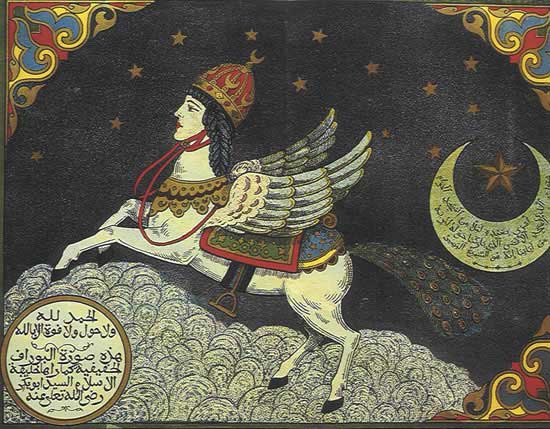19 The Manticore
The Manticore, Griffin, and other Animal Hybrids in Art and Verse
The manticore was a hybrid of a man with the body of a lion.
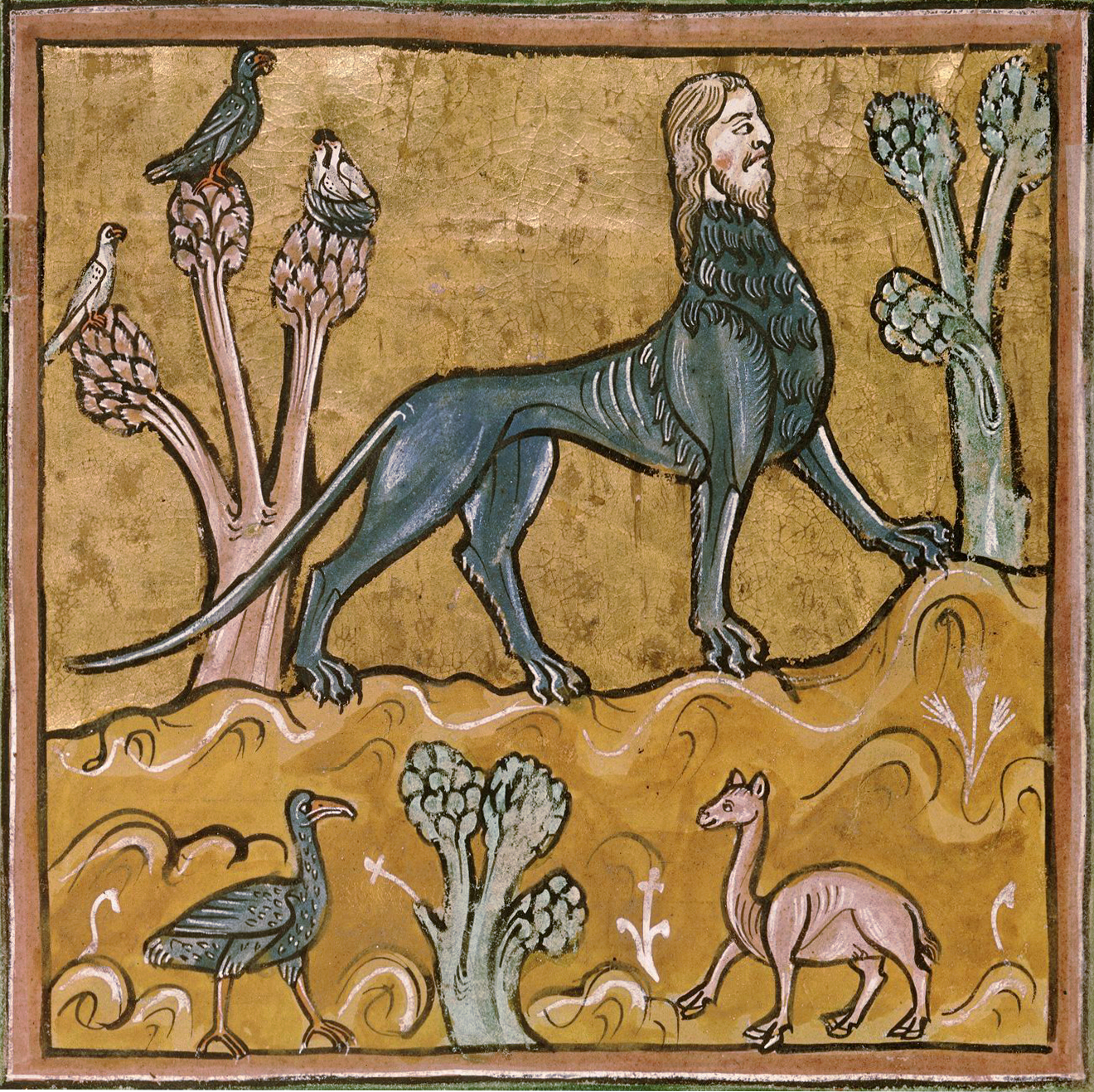
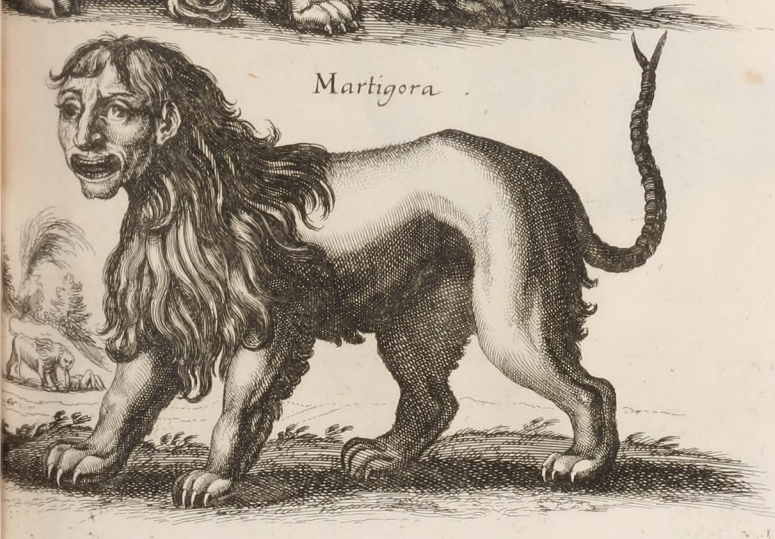
Originating in Persian mythology,
“The Manticore, or Martigora was described by Pliny and Aristotle as a creature with the face and ears of a human, with grey eyes and a red body; a tail with a sting like that of a scorpion, and being the size of a lion, and with a lion’s paws, a triple row of teeth and an appetite for human flesh.” Retrieved, September 22, 2022 https://en.wikipedia.org/wiki/Manticore
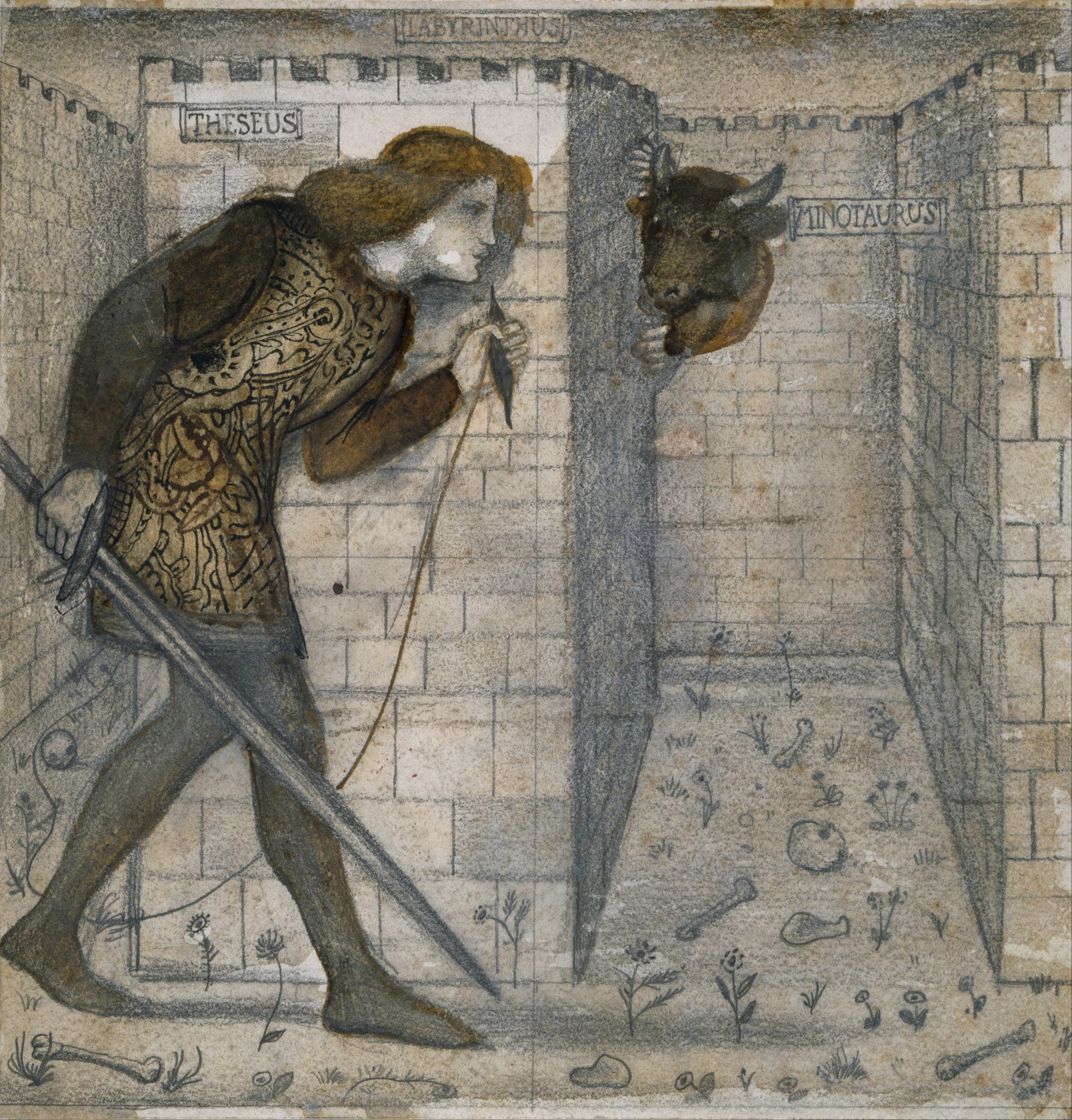
For more information about the Minotaur, please open the link below.
https://dailyhistory.org/What_was_the_legend_of_the_Minotaur
The fight between Theseus and the Minotaur is one of the most famous in Greek mythology. Using a piece of string given to him by Princess Ariadne to trace his way out of the labyrinth, Theseus defeats the minotaur which in Burne Jones’s tile seems timid and frightened and not a threat. The half man-half bull creature had many different meanings depending on the version of the minotaur myth. Another famous art image of the minotaur can be seen in Frederick Watt’s minotaur (Tate Gallery, London). the Minotaur and frees the children of Athens. For the complete story of Theseus and the Minotaur, please refer to the following links.
(Ancient Greek and Roman Myths): https://www.gutenberg.org/files/22381/22381-h/22381-h.htm
The Minotaur: https://en.wikipedia.org/wiki/Minotaur
The Minotaur in Nathaniel Hawthorne’s (1804-1864) Tanglewood Tales (published in 1853).
https://www.gutenberg.org/files/976/976-h/976-h.htm
“Only [the minotaur’s] horned head belonged to a bull; and yet, somehow or other, he looked like a bull all over, preposterously waddling on his hind legs; or, if you happened to view him in another way, he seemed wholly a man, and all the more monstrous for being so. And there he was, the wretched thing, with no society, no companion, no kind of a mate, living only to do mischief, and incapable of knowing what affection means. Theseus hated him, and shuddered at him, and yet could not but be sensible of some sort of pity; and all the more, the uglier and more detestable the creature was. For he kept striding to and fro, in a solitary frenzy of rage, continually emitting a hoarse roar, which was oddly mixed up with half-shaped words; and, after listening a while, Theseus understood that the Minotaur was saying to himself how miserable he was, and how hungry, and how he hated everybody, and how he longed to eat up the human race alive.
Ah! the bull-headed villain! And O, my good little people, you will perhaps see, one of these days, as I do now, that every human being who suffers any thing evil to get into his nature, or to remain there, is a kind of Minotaur, an enemy of his fellow-creatures, and separated from all good companionship, as this poor monster was….” (Hawthorne, “The Minotaur,” Retrieved March 26, 2023
https://www.gutenberg.org/files/976/976-h/976-h.htm#link2H_4_0002)
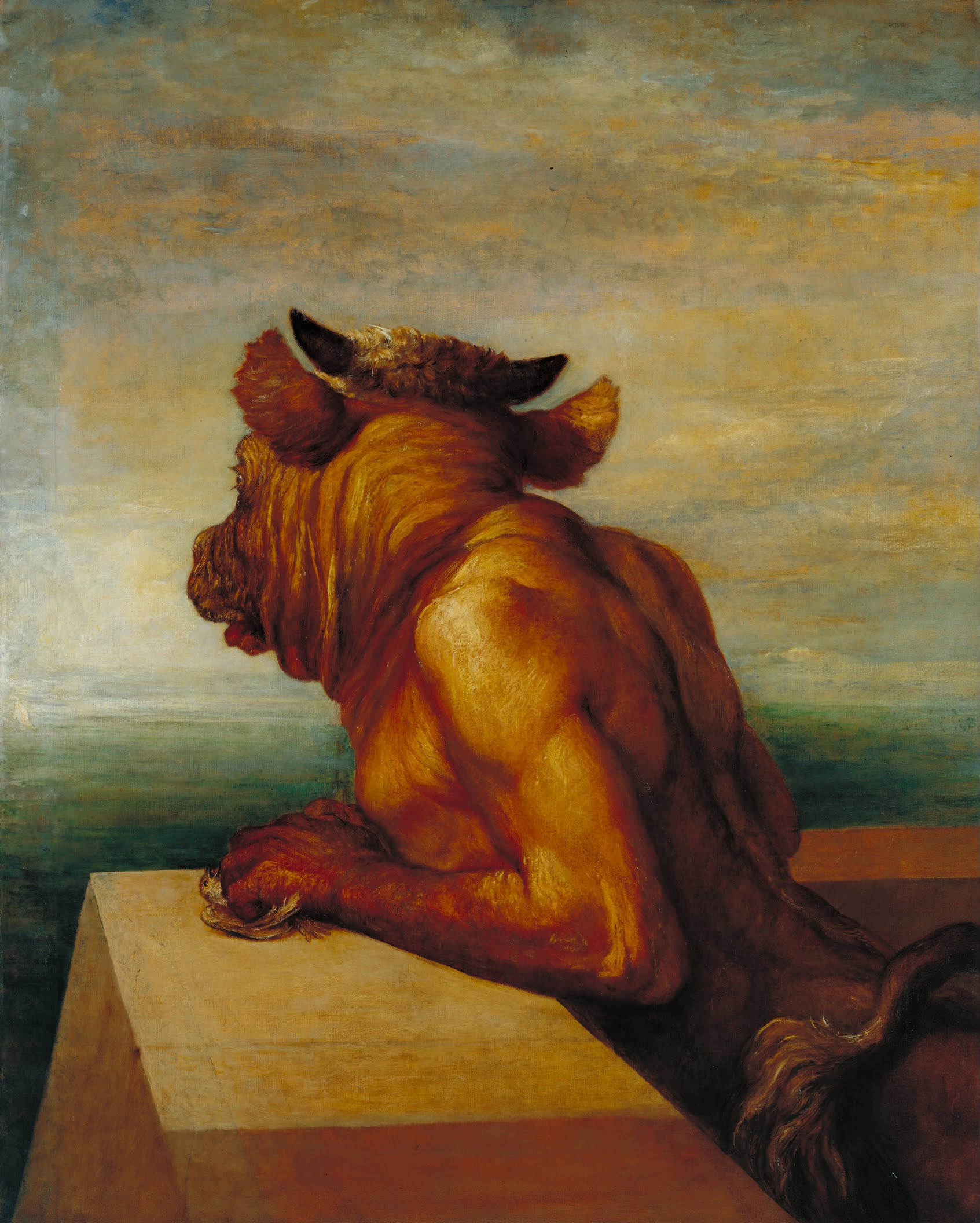
Note about the allegorical symbolism of George Frederick Watts’ “Minotaur” featured in The Tate Gallery, London:
“Watts, an allegorical painter who employed art to convey moral messages, uses the character of the Minotaur to signify man’s bestiality and especially male lust. The making and meaning of The Minotaur can be traced to the social purity crusades against child prostitution, which led in 1885 to the passing of the Criminal Law Amendment Act and the raising of the age of consent from thirteen to sixteen. In the forefront of these crusades was the figure of W.T. Stead (1849-1912), whose series of articles on the London trade in child prostitution were published in the Pall Mall Gazette in July 1885 under the title ‘The Maiden Tribute of Modern Babylon’. Stead’s explicit references to the Greek myth of the Minotaur throughout his exposé reputedly inspired the subject of Watts’s painting: ‘The appetite of the minotaur of London is insatiable’, wrote Stead ; ‘If the daughters of the people must be served up as dainty morsels to minister to the passions of the rich, let them at least attain an age when they can understand the nature of the sacrifice which they are asked to make’ (quoted in Mathews, p.339). Watt’s close friend Mrs Russell Barrington records how The Minotaur was painted with unusual rapidity early one morning in response to ‘a painful subject’ that ‘had filled one of the evening papers’ ; almost certainly the Pall Mall Gazette (Barrington, pp.38-9). When The Minotaur was first shown, at the Liverpool Autumn exhibition of 1885, Watts explained that his aim in painting it had been ‘to hold up to detestation the bestial and brutal’ (quoted in Art Journal, 1885, p.322). The Minotaur was among those works that Watts dedicated to the British Nation in 1897 and which are now held in the Tate collection. Mammon (Tate N01630), a moralising invective against the evils of material greed, is another.” Retrieved November 22, 2022 https://www.tate.org.uk/art/artworks/watts-the-minotaur-n01634
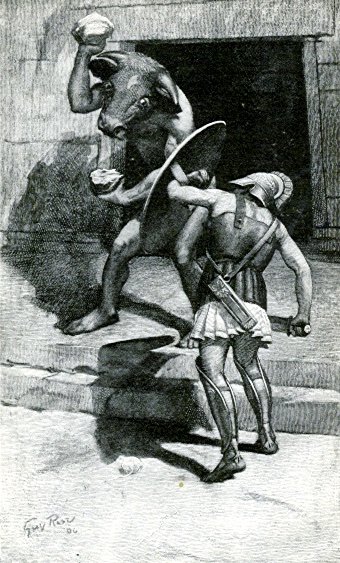
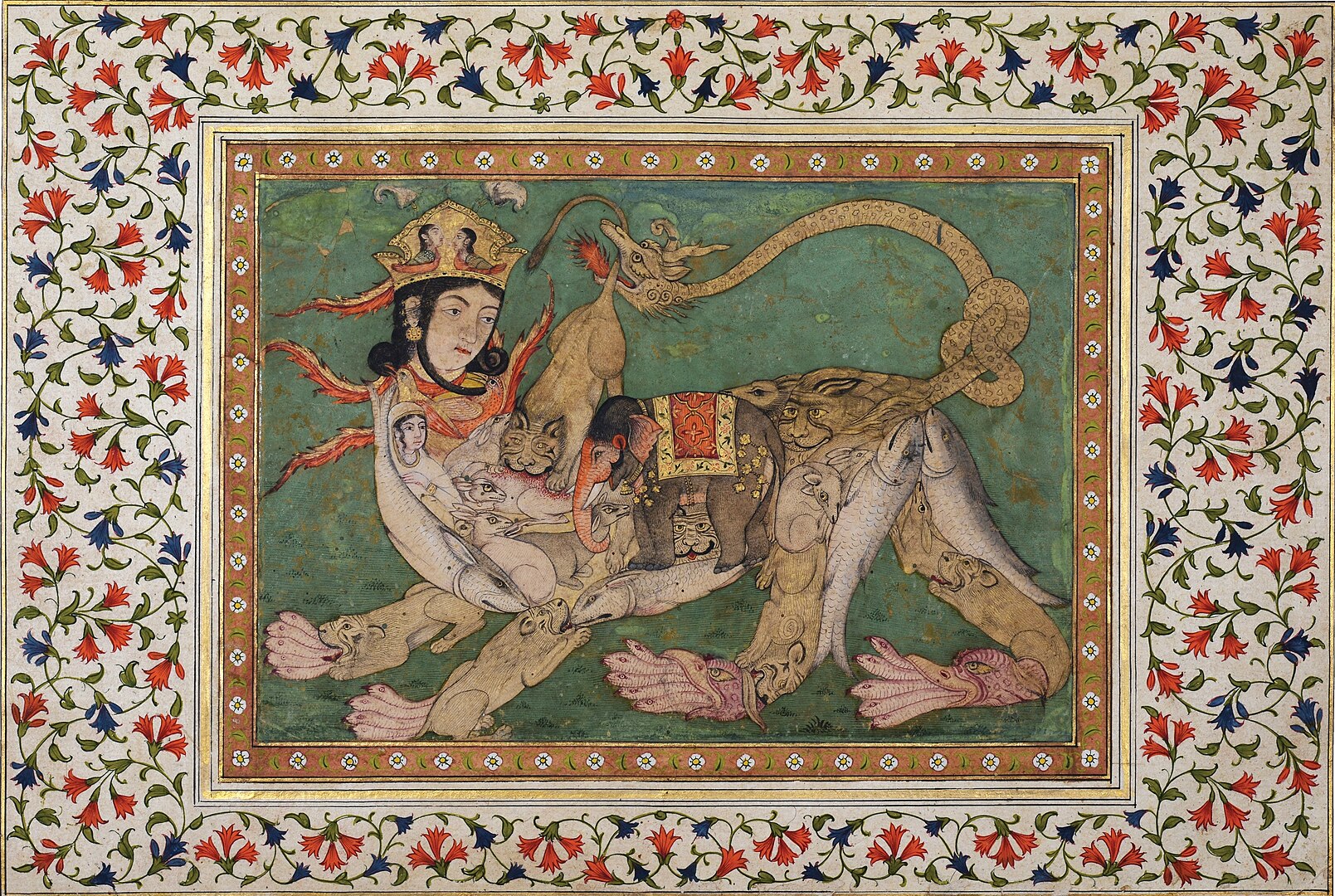
Al- Buraq
The buraq was sent to take the prophet Mohammad to from Jerusalem to Mecca and back. The burqa is described as an angelic winged being with the head of a woman, the body of a mule, and the tale of the peacock. In this elaborate illustration, the burqa composite is more intricate and complex. There is the body of the lion and the head of a woman. Snarling lions appear everywhere ready to prey upon smaller animals like rabbits, deer, and fish. For more information please open the link below (Google Arts and Culture, Retrieved September 10, 2022). https://artsandculture.google.com/asset/al-buraq/GQFKm5AzrQbkBA
